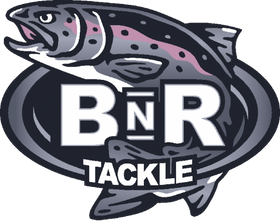Chinook Salmon are available through Spring chinook runs as early as March and winter chinook into December.
For this column, the focus will really be on tributary and non-tidal-based river portions. The bead and twitching jig techniques described are most effective in those areas. Some of the key areas for chinook starting from northern California include the Sacramento, Rogue, Umpqua, Siuslaw, Tillamook Bay Tributaries, Columbia River tributaries, Willapa Bay tributaries, Grays Harbor tributaries, Quillayute and Fraser River tributaries. Many of these systems are large with many significant tributaries.
When to target chinook in the tributaries can be very rainfall dependent.
Usually, the most productive time periods are following a freshet which raises the water level to move the fish out of tidewater but does not make the river unfishable. The most effective areas we have found for bead fishing are holding areas with a slow walking speed or faster amount of current. Holes that have little to no current seem to be less productive for bead fishing.
For targeting chinook with beads within these regions, float fishing and drift fishing have been successful. For float fishing with the bead, we advise either fishing the bead as the only bait or with the bead on a dropper underneath bait. For the bead by itself we recommend 20, 25 and 32mm beads in Cerise, Sweet Pink Cherry, Mottled Red, Clown, Red, Joker, Lucky and Mottled Pink. A hook size of 2/0 to 4/0 hook is adequate along with 2’ to 3’ of 20 to 30 lb. leader. When fishing the bead as a dropper under bait a smaller bead in the 14, 16 or 20mm range, along with a 1/0 to 2/0 hook on 8 to 10” of 20 lb. leader. Within float fishing we have found both bobber doggin the bead and fishing the bead suspended are effective for targeting chinook. The general advice will be in smaller more defined holes to fish the beads suspended while in larger, more open holes to run a bobber doggin rig. We have learned that beads are a great “change-up” option for chinook. After fishing bait for a period, the bead has a tendency to get the bite going again or pick up the fish that are not interested in bait. If you are accustomed to fishing bobber and bait for chinook you may notice that the bite on a bead is different. The Chinook bead bite seems more like the fish are chomping on the bead trying to kill and often the bite will look more like a trout bite. It is an odd behavior to watch from a chinook but there is no doubt that they like the big beads.

Targeting chinook in smaller tributaries and rivers with beads can be very effective.
Preferred sizes are 20, 25 and 32mm and colors in Cerise, Sweet Pink Cherry, Mottled Red, Clown, Red, Joker, Lucky and Mottled Pink. The most effective water conditions appear to be after there has been enough rainfall to raise the river level from the late summer or fall low and dry conditions.
Twitching for chinook is slowly making its way into wide known circles. This success is like how you would twitch for coho with the main driver being the reliance on more chartreuse colors in the jig patterns. Colors like “Hawk” and “Full Moon” are productive color choices. One of the key needs for chinook twitching is that chinook can be lazy about how far they will move to chase a bait in comparison to coho. For this reason, it can be important to make sure you are getting the jig down to the appropriate depth for chinook.
In conclusion, beads and twitching jigs for chinook are a key option to include in your arsenal. The technique is still in the infancy stage so early adopters will have an advantage. Big beads in bright colors are key.


